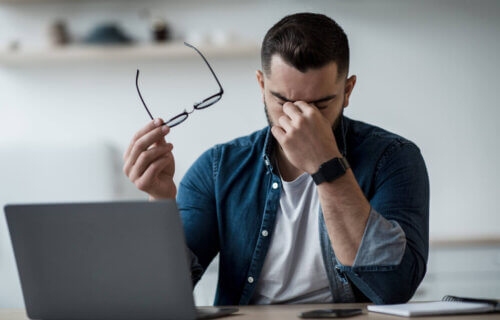BIRMINGHAM, United Kingdom — Extended screen time is unavoidable across countless jobs nowadays. Of course, many others spend all day staring at a screen of some kind even if they’re not working. It may be the modern way, but all of those screens can take a toll on our eyes. If you’re looking for a new way to give your tired eyes a rest and avoid further strain, new research from Aston University has a recommendation, and it only takes 20 seconds!
Dubbed the 20-20-20 rule, the strategy is simple. Just look away from your screen for 20 seconds every 20 minutes, and be sure to look at least 20 feet away. Study authors say this approach can help ease some of the eye symptoms associated with prolonged computer use.
The research team used special software to track participants’ gaze for a period of two weeks, measuring eye symptoms before and after trying out the 20-20-20 rule. This is the first time ever that this eye-relief strategy has been scientifically validated.
Current estimates tell us that at least half of people using computers for their jobs experience some form of digital eye strain, usually resulting in irritation, dryness, headaches, or blurred vision. Normally, humans blink around 15 times each minute, but while staring at a screen, this number usually drops to half that rate or less. Less blinking means an increased risk of dry, irritated, and tired eyes.
According to this latest work, however, all it takes is 20 seconds of looking elsewhere for one’s eyes to relax enough to reduce the strain.
20-20-20 rule can bring lasting relief
The 20-20-20 rule was tested on 29 participants, all of whom were experiencing some form of eye strain. Special software was downloaded onto each person’s laptop that used the computer’s camera to both check if subjects were sitting in front of the screen, and monitor their gaze direction every few seconds. After every 20 minutes, the program would produce a pop-up message telling users to rest their eyes for 20 seconds by looking at anything around 20 feet away (out the window, or across the room, for example). Subjects couldn’t remove the pop-up until the “rest session” was completed, as measured by the app.
Digital eye strain symptoms were measured among participants both before and after two weeks of using the 20-20-20 rule, as well as one week after the study was over. All in all, the results indicate a notable decrease in eye strain symptom such as dryness, sensitivity, and discomfort.
“The one previous study merely asked people to carry out the suggestions; but here the access control on the software meant we could be sure that participants really had looked away every 20 minutes. We saw a consequent improvement in the symptoms of the group as a whole,” says Professor James Wolffsohn, Professor of Optometry at Aston University, who led the research in collaboration with the University of Valencia, Spain, in a statement.
Researchers add that after the study, participants’ eye symptoms largely regressed back to what they had been before the intervention period.
“We are planning to conduct longer term studies to see whether we can teach eyelid muscle memory impulses to blink more often during digital viewing, to help mitigate this chronic issue without long term use of reminders,” Prof. Wolffsohn explains. “Although we used sophisticated software, it’s easy for others to replicate the effect by setting a timer on their phone, or downloading a reminder app. It’s a simple way of reminding yourself to take regular breaks for the good of your eyes.”
The study is published in Contact Lens and Anterior Eye.
